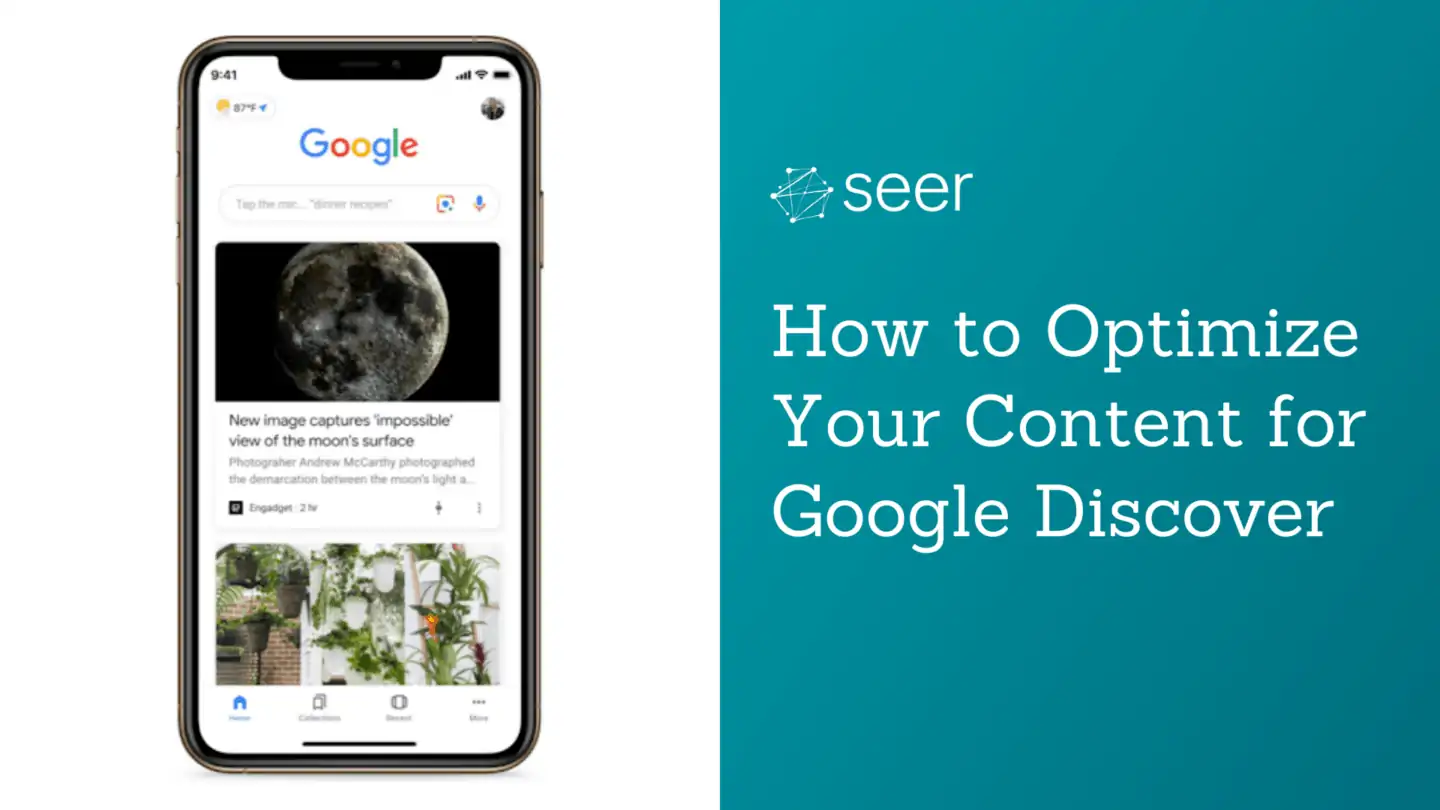Mobile App Development, SEO, Social Media, Uncategorized, Web Development, Website Design
What is Google Discover & How Do You Optimize For It?
- By Brett Belau
17 Sep

What Is Google Discover?
First launched in 2016 under the name Google Feed, Google has since revamped this Google mobile app feature to its current version: Google Discover.
💡 Since its release in 2018, Google Discover has gained over 800 million monthly active users.
Google Discover is available on Androids, iPhones, and iPads via the Google mobile app or in your phone’s browser on google.com.
With Discover, Google turned the verb “googling” from active to passive by completely eliminating the search function. With this format, Google handpicks articles for each user based on their demonstrated interests, recent search activity, and location.
Google Discover follows the same format as AI-driven social platforms like TikTok, in which an algorithm customizes a user’s feed to their interests.
These personalized results continually update with new content suggestions based on:
- Search activity and search history
- Information from contacts and apps
- Location settings and location history
- Newly published content
How Do You Optimize for Google Discover?
As with any Google-related implementation, SEOs everywhere are naturally trying to understand it and most importantly, optimize for it. Even though the earliest iteration of Discover was released in 2016, there are still many unknowns surrounding what Google Discover means for SEO.
Optimizing for Google Discover isn’t completely left to guesswork, however.
In short, the best way to optimize for Google Discover is to keep doing what you’ve always been doing. Most importantly, keep producing content with the user (not Google bots) in mind.
How Does Content Appear in Google Discover?
To appear in the Google Discover feed, a piece of content must fulfill the following criteria:
- Be indexed in Google
- Not violate Google’s policies for Search features
How Can You Optimize Content for Google Discover?
As you create SEO-optimized content, you will naturally optimize for Google Discover, as it largely follows traditional ranking criteria. However, there are several optimization practices that are especially important for appearing on a user’s Google Discover feed.
Optimize for E-A-T
- Expertise
- Authoritativeness
- Trustworthiness
💡 E-A-T is the foundation of good SEO.
Without these three building blocks, you won’t rank. If you continue to base your SEO strategy around these three pillars, Google will reward your content by allowing it to appear in Google Discover.
Avoid Titles that Resemble Clickbait
Google will naturally reject anything that hints of clickbait or spam. A good title is honest and conveys what the article is about without overpromising or exaggerating.
Include High-Quality Images
Google Discover threw out the meta description and instead uses images to do the talking. (Besides, a picture tells a thousand words…or 120 – 150 characters.) Since Google Discover relies so heavily on visuals to describe the article topic, incorporating compelling images into your content is critical to success.
In order for a page to be featured in Google Discover, it must include an image that fulfills the following criteria:
- Be a minimum of 1200px wide
- Be enabled by the max-image-preview:large setting
- Not be a site logo
Optimize for Mobile
We already know that optimizing for mobile is a major ranking factor in search. The advent of Google Discover places additional emphasis on this component, as Discover is a mobile-only feature. You can take Google’s Mobile-Friendliness Test to find out if your site is optimized for Google Discover.
Produce Timely Content
SEOs strive to stay on the cutting edge of industry news to anticipate trends and produce relevant content right when users are looking for it. Because Google Discover aims to place timely content at users’ fingertips, this could accelerate the speed at which stories and trends are spread. After all, AI is far better at identifying trends than the average SEO.
With this in mind, staying abreast of current trends and capitalizing on these content opportunities is paramount to increase your chances of appearing in Google Discover. This also increases the importance of continually optimizing your existing content to maintain its relevance.
A study found that the majority of URLs in Google Discover only receive traffic for 3-4 days; most of that traffic takes place the first or second day after their publication.
Final Thoughts: Should You Optimize Your Content for Google Discover?
While Google Discover has the potential to impact all digital industries, it has taken off for some industries more than others.
Another study discovered that 46% of a sample size of Google Discover URLs were news sites and 44% were Ecommerce.
Meanwhile, pages from the following industries only make up 1-2% of the URLs appearing in Google Discover:
- Health
- Education
- Finance
- Travel
- B2B
- Automotive
If your site is situated in one of the above fields, the majority of your traffic will still come from Google Search. Keep in mind, however, that 1% still accounts for 1 million annual clicks.
💡 Optimizing for Google Discover is important no matter the industry.
Comment below with your thoughts on optimizing for Google Discover and sign up for our newsletter for the latest updates on all things SEO:
Source: www.seerinteractive.com, originally published on 2021-09-16 16:19:06
Connect with B2 Web Studios
Get B2 news, tips and the latest trends on web, mobile and digital marketing
- Appleton/Green Bay (HQ): (920) 358-0305
- Las Vegas, NV (Satellite): (702) 659-7809
- Email Us: [email protected]

© Copyright 2002 – 2022 B2 Web Studios, a division of B2 Computing LLC. All rights reserved. All logos trademarks of their respective owners. Privacy Policy



![How to Successfully Use Social Media: A Small Business Guide for Beginners [Infographic]](https://b2webstudios.com/storage/2023/02/How-to-Successfully-Use-Social-Media-A-Small-Business-Guide-85x70.jpg)



![How to Successfully Use Social Media: A Small Business Guide for Beginners [Infographic]](https://b2webstudios.com/storage/2023/02/How-to-Successfully-Use-Social-Media-A-Small-Business-Guide-300x169.jpg)


Recent Comments